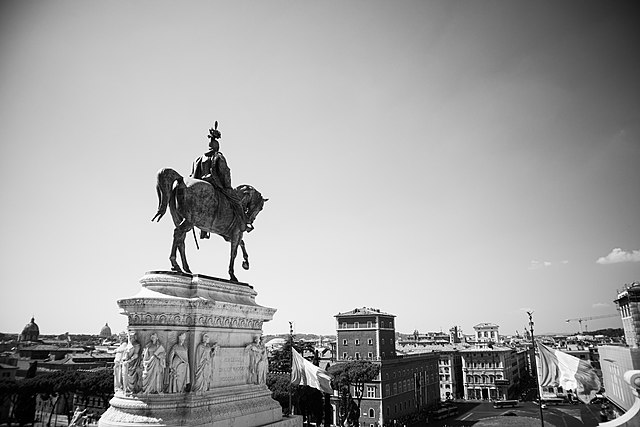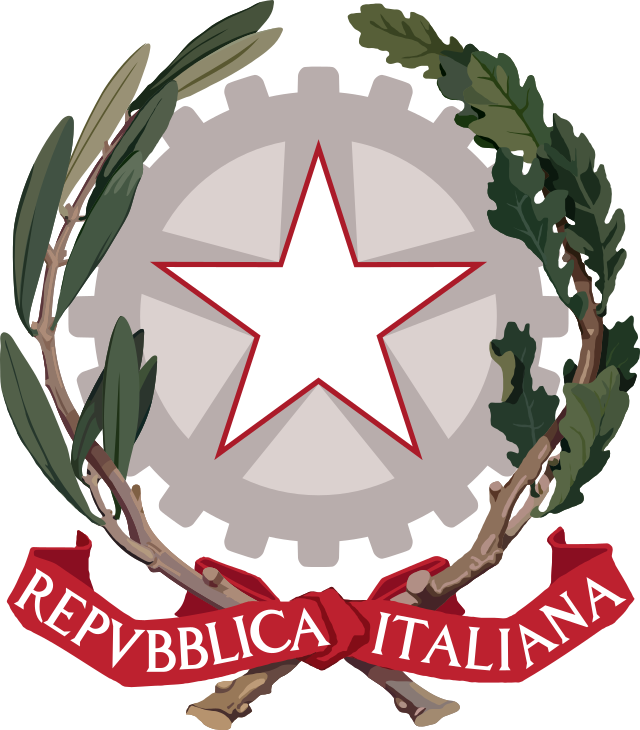(English follows)
Sapevi che Roma è stata due volte capitale d’Italia? La cosa potrebbe non sorprendere poiché nel corso della storia italiana è stata al centro di molteplici vicende che hanno interessato la penisola italiana. Primo fra tutti l’Impero Romano quando la città era veramente l’ombelico del mondo. Successivamente all’interno della Città Stato, che per molti secoli ha posto Roma nel cuore della cristianità. Tuttavia, la città eterna è tra altre quattro città italiane a detenere il titolo di capitale d’Italia.
Torino (1861)
La città piemontese Torino fu la prima capitale d’Italia nel 1861 quando fu proclamata l’Unità d’Italia. All’epoca Roma non era nemmeno all’interno dei confini nazionali.
Durante la Seconda Guerra d’Indipendenza e la Spedizione dei Mille, guidata da Giuseppe Garibaldi, alcune zone della penisola furono consegnate al Regno di Sardegna governato da Vittorio Emanuele II: la Lombardia, una parte dell’Italia centrale, e tutto il Mezzogiorno, sottratto all’ex Regno delle Due Sicilie.
Nel frattempo lo Stato Pontificio era retto da Papa Pio IX che non era disposto a cedere Roma al nuovo Regno d’Italia.
Oltre i confini italiani c’era anche il Veneto, che era ancora una roccaforte degli austriaci.
Pertanto Torino, già capitale del Regno di Sardegna, fu eletta provvisoriamente come città amministrativa del nuovo Stato.
Firenze (1864)
Il Papa aveva un alleato molto potente, l’imperatore francese Napoleone III, nipote di Napoleone Bonaparte, che stipulò con gli italiani il 15 settembre 1864 un accordo, la Convenzione di Settembre per assicurare che il Regno d’Italia non prendesse Roma. Di conseguenza la capitale definitiva fu trasferita da Torino a Firenze.
Poiché la città, conosciuta come la culla dell’arte, doveva rimanere permanentemente la capitale del giovane Regno italiano, subì importanti opere pubbliche per svolgere il suo nuovo ruolo. Infatti gran parte delle antiche mura del XII secolo furono demolite per far posto a grandi strade e uffici amministrativi. Mentre i maestosi palazzi rinascimentali divennero le sedi dei Ministeri e degli uffici di Stato. Nonostante ciò, il capoluogo fiorentino ebbe vita breve.
Roma (1870)
Le promesse fatte a Napoleone III non furono mantenute, infatti l’Italia era desiderosa di impadronirsi di Roma e vi riuscì nel 1870, attraverso la celebre Breccia di Porta Pia.
La terza capitale d’Italia fu da qui in poi Roma, durante il periodo monarchico che terminò nel 1946 e dopo la proclamazione della Repubblica nello stesso anno.
Brindisi (settembre 1943 – febbraio 1944)
Tuttavia vi furono due brevi eccezioni, note anche come le due capitali della guerra, quando l’Italia fu divisa in due durante la seconda guerra mondiale dopo l’armistizio dell’8 settembre 1943. Il Centro-nord era ancora controllato dai nazifascisti, mentre il Sud era già stato liberato dalle forze alleate, che lottavano per avanzare verso nord. Il 10 settembre il re Vittorio Emanuele III e il governo fuggirono a Brindisi, in Puglia, per continuare a governare il paese facendo di Brindisi la quarta capitale d’Italia.
Salerno (febbraio – luglio 1944)
Questo fu il periodo più drammatico della guerra che causò grande devastazione in Italia, ma che portò le forze tedesche al ritiro a nord del fiume Volturno e alla resa di Napoli. Fu così che nel febbraio del 1944 Salerno divenne il centro principale del governo italiano liberato e dove la resistenza reale e il governo. rimasero per 5 mesi.
Roma (1944 -)
Infine quando le truppe americane entrarono a Roma tra il 4 e il 5 giugno 1944, la Città Eterna fu finalmente liberata e in grado di riconquistare il suo ruolo storico.

Did you know that Rome has been the capital of Italy twice? This might not come as a surprise since it has been at the centre of multiple events throughout history that have concerned the Italian peninsula. First and foremost the Roman Empire, when the city was truly the belly of the world. And afterwards within the Church State (Città Stato), which for many centuries established Rome as the heart of Christianity. However, the Eternal city is among four other Italian cities to hold the title of capital of Italy.
Turin (1861)
The piemontese city Turin was the first capital of Italy in 1861, when the Unification of Italy (l’Unità d’Italia) was proclaimed. At the time, Rome was not even within the national borders.
During the Second War of Independence (Seconda Guerra dell’Indipendenza) and la Spedizione dei Mille, lead by Giuseppe Garibaldi, some areas of the peninsula were handed over to the Reign of Sardinia ruled by Vittorio Emanuele II: Lombardy, a part of central Italy, and all of southern Italy (il Mezzogiorno), which was removed from the former kingdom of the two Sicilies (l’ex Regno delle due Sicilie).
In the meantime the Papal State (lo Stato Pontificio) was ruled by Pope Pio IX who was not willing to give up Rome to the new Italian Reign. Beyond the Italian confines there was also Veneto, which was still a stronghold of the Austrians. Therefore Turin, already the capital of the Reign of Sardinia, was temporarily elected as the administrative city of the new State.
Florence (1864)
The Pope had a very powerful alley, the French emperor Napoleon III, nephew of Napoleon Bonaparte, who stipulated with the Italians on September 15, 1864 an agreement, the Convention of September (la Convenzione di Settembre), to ensure the Reign of Italy would not seize Rome. Consequently the definite capital was transferred from Turin to Florence.
Because the city, known as the cradle of art, was supposed to permanently remain the capital of the young Italian Reign, it underwent major public works to fulfill its new role. In fact most of the old 12th century walls were demolished to make room for large roads and administrative offices. While the majestic Renaissance palaces became the seats of the Ministries and the State offices. Despite this, Florence capital lived a short life.
Rome (1870)
The promises made to Napoleon III were not kept, in fact Italy was eager to seize Rome and it managed to do so in 1870, through the renowned Breccia di Porta Pia.
The third capital of Italy was Rome from here on during the Monarchic period which ended in 1946 and after the proclamation of the Republic in the same year.
Brindisi (September 1943 – February 1944)
However there were two short exceptions, also known as the two capitals of the war, when Italy was split in half during WWII after the armistice on September 8, 1943. The Centre-north was still controlled by the Nazi-fascists, while the South had already been liberated by the Allied Forces, who were struggling to advance to the north. On September 10th King Vittorio Emanuele III and the government escaped to Brindisi, in Puglia in order to continue to govern the country making Brindisi the fourth capital of Italy.
Salerno (February – July 1944)
This was the most dramatic period of the war that caused great devastation in Italy, which resulted in German forces withdrawing north of the Volturno river and surrendering Naples. So it was in February 1944 that Salerno became the main centre of the liberated Italian government and where the Royal resistance and government remained for 5 months.
Rome (1944 -)
Finally when the American troops entered Rome between June 4th and 5th 1944, the Eternal City was finally liberated and able to reconquer its historical role.

- I soldati dimenticati – The forgotten soldiers

- History of the Italy: The Etruscans | La Storia della Cultura Italiana: Gli Etruschi

- Per i politici italiani la lingua italiana è un optional

- La Posca dei legionari romani

- The language of wine between art and taste

- Settimana della Cucina Italiana nel Mondo

- Un viaggio virtuale in Abruzzo

- Scioglilingua basati sui numeri

- Un viaggio virtuale in Valle d’Aosta


